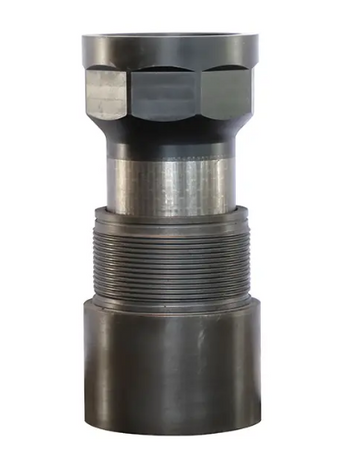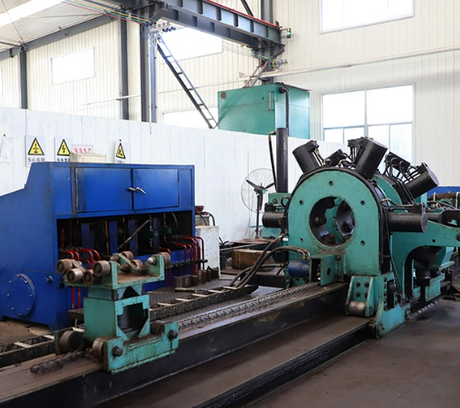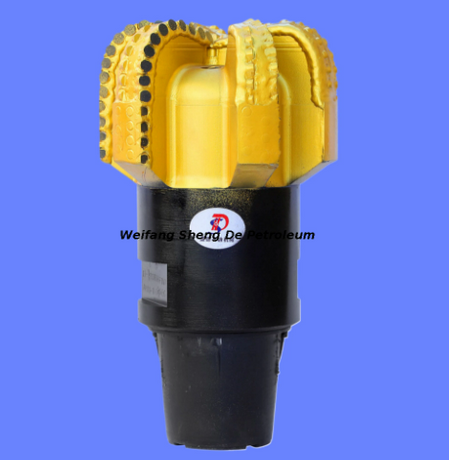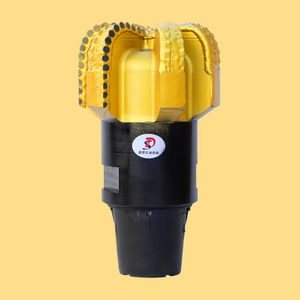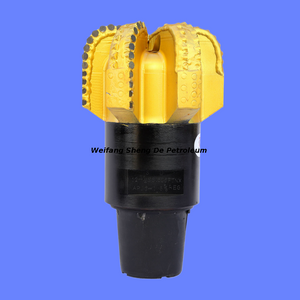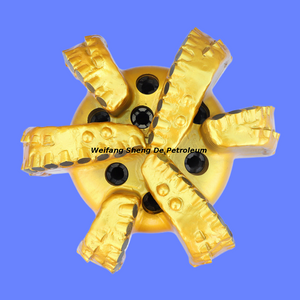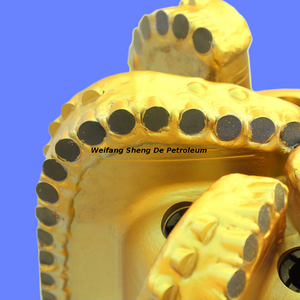PDC bits drive modern drilling efficiency, combining durability with cutting performance. Operators aim to boost ROP by up to 20% through optimized hydraulics and cutter layout. In this article, you will learn practical strategies to enhance PDC bit performance and maximize drilling results.
Understanding PDC Bit Performance Drivers
Key Factors Affecting ROP
Several elements influence the ROP of a PDC bit. Cutter design, hydraulic efficiency, and operational parameters such as Weight on Bit (WOB) and rotations per minute (RPM) all play a role. Harder formations can reduce ROP if the bit is not optimized. Conversely, softer formations may see increased ROP but require careful cuttings management. Understanding these variables allows operators to tailor PDC bit design for maximum efficiency, minimizing downtime and enhancing drilling economics. Proper attention to these factors ensures stable operations, reduces unexpected maintenance, and maximizes tool life.
Role of Hydraulics in PDC Bit Efficiency
The hydraulic system is vital for both cooling the bit and removing cuttings from the borehole. Hydraulic Horsepower per Square Inch (HSI) and jet impact force are critical metrics. Properly designed hydraulics ensure even fluid distribution across the bit face, preventing hot spots and cutter wear. Optimized flow maintains consistent ROP while reducing the likelihood of balling, particularly in sticky formations. Well-designed hydraulics also improve directional control and reduce torque fluctuations, contributing to longer bit life and overall drilling efficiency.
Impact of Cutter Layout
Cutter arrangement directly affects cutting efficiency, torque stability, and bit longevity. High-density layouts provide more cutting surfaces but can increase wear and reduce bit life. A balanced layout optimizes depth of cut and prevents excessive torque fluctuations. Strategic cutter placement ensures that each cutter contributes effectively to the overall ROP, adapting to varying rock formations. Additionally, layout adjustments based on formation type help manage vibration and prevent uneven wear, allowing operators to maintain consistent drilling performance over extended runs.
![PDC bit PDC bit]()
Optimizing PDC Bit Hydraulics
Maximizing Flow Rate for Cuttings Removal
High flow rates improve hole cleaning and prevent balling. Maintaining an annular velocity above 100 ft/min has been shown to enhance ROP. However, excessive flow can cause erosion on bit components and reduce hydraulic efficiency. Operators should monitor pressure drop and optimize flow for each formation type to maintain consistent cutting removal. Properly calibrated flow ensures that cuttings are transported efficiently to the surface, reduces localized bit heating, and maintains optimal cutter engagement throughout the drilling process.
Strategic Nozzle Configuration
Combining center and peripheral nozzles improves hydraulic performance. Balanced nozzle sizes prevent uneven cuttings distribution and minimize dead zones. Some PDC bits employ staggered nozzle arrangements to target high-pressure areas effectively. This configuration increases cutter cooling and reduces bit temperature, allowing sustained drilling at high ROP. The strategic design of nozzle angles and exit velocities also helps maintain stable bit rotation, reducing vibration and improving directional control in extended reach or deviated wells.
Parameter | Recommended Range | Purpose |
Annular Velocity | ≥ 100 ft/min | Efficient cuttings removal |
Nozzle Size Ratio | 1:1 | Balanced flow distribution |
HSI (Hydraulic Horsepower) | 2.5–4.0 | Cooling and cleaning efficiency |
Jet Impact Force | Formation-specific | Cutter cleaning and debris dislodgement |
Hydraulic Horsepower Management
Optimizing HSI ensures sufficient energy reaches each cutter. Underpowered hydraulics lead to inadequate cooling, whereas excessive HSI can accelerate bit wear. Adjusting pump pressures in combination with nozzle selection achieves optimal cooling and cuttings transport. High-temperature formations require careful monitoring to prevent premature cutter degradation. Maintaining the right HSI also reduces stress on the bit body and prevents microfractures in abrasive formations, ensuring both safety and reliability during high-speed drilling operations.
Jet Impact Force and Targeted Cleaning
Jet impact force dislodges cuttings and enhances cooling around cutters. Operators can adjust nozzle sizes and pump pressure to target specific regions on the bit face. By aligning jet paths with primary cutter locations, fluid energy is efficiently used, preventing recirculation of cuttings and maintaining high ROP throughout the operation. Optimizing impact forces also reduces localized wear and allows higher penetration rates without compromising bit stability or increasing maintenance costs.
Cutter Layout Optimization for Maximum ROP
Strategic Cutter Placement
Primary and secondary cutter positions influence cutting efficiency and torque. A well-planned 6-blade layout demonstrates significant improvement in ROP. The strategic positioning reduces vibration and balances load across the bit. Proper placement also facilitates directional control during lateral or deviated drilling operations. In addition, placement strategies take into account cutter wear patterns and load distribution, enabling operators to extend bit life and maintain consistent penetration even in variable formations.
Cutter Size, Shape, and Exposure
Larger cutters remove more material but may increase stress on the bit. Geometries such as conical or ridged cutters optimize rock fracturing. The introduction of 17.5mm height cutters allows greater depth of cut without compromising durability. Exposure height directly affects bit longevity and overall penetration efficiency. Choosing the right combination of cutter size and geometry for the specific formation ensures balanced wear distribution, optimal ROP, and reduced risk of premature failure.
Blade Configuration and Density
Blade number and arrangement impact both stability and ROP. High-density layouts increase cutting surfaces but may reduce fluid access to each cutter. Standard layouts provide better fluid flow but slightly lower ROP. Selecting the correct density and arrangement requires balancing formation hardness, cuttings removal efficiency, and operational parameters. Advanced blade designs can enhance lateral stability, reduce vibration, and maintain ROP under varying formation conditions.
Directional Control & Formation Adaptation
Cutter layout affects not only penetration but also directional stability. Hard formations may benefit from aggressive placement, while soft formations require layouts that minimize bit balling. Adjusting cutter patterns ensures efficient drilling across varying formations, improving overall wellbore quality and reducing non-productive time. Flexible design adaptation also allows operators to adjust for unexpected formation changes, keeping drilling performance consistent and predictable.
Integrating Hydraulics and Cutter Layout
Synergy Between Flow and Cutting Action
Combining fluid dynamics with cutter efficiency creates substantial gains. Proper alignment of jet streams with high-impact cutters can improve ROP by 15–20%. This synergy reduces cutter wear and enhances bit stability. By considering both factors simultaneously, operators maximize drilling performance and efficiency. Integrated designs allow for faster cleaning of cuttings, improved cooling, and smoother torque distribution, enabling longer drilling intervals without downtime.
Blade-Fluid Channel Alignment
Nozzle and fluid channel alignment ensures uniform cooling and cuttings removal. Multi-blade PDC bits benefit from staggered channels that reduce interference between blades. This design minimizes hotspots and prevents local overloading, sustaining high ROP even in extended runs. Proper alignment also enhances directional accuracy and reduces the risk of borehole deviation, which is crucial for deep or complex well trajectories.
Advanced Design Techniques
Finite Element Method (FEM) and rock mechanics modeling enable predictive design. Operators can anticipate stress points, optimize cutter positions, and adjust hydraulic flow before field deployment. These techniques extend bit life and reduce drilling downtime while improving penetration efficiency. Advanced simulation also helps identify optimal blade geometries and material selection, contributing to both operational safety and cost efficiency.
Operational Optimization for PDC Bits
Weight on Bit (WOB) Management
Maintaining proper WOB is crucial to prevent early cutter wear and hole instability. Gradual increases allow cuttings to be effectively removed. Excessive WOB can cause flat wear or bit balling, while insufficient WOB reduces ROP. Adjustments should be formation-specific and monitored in real-time. Optimal WOB management improves overall penetration efficiency and prevents the bit from being overloaded, extending service life and maintaining operational consistency.
Rotational Speed (RPM) Adjustments
Optimal RPM balances cutting efficiency with wear and vibration. Incremental changes allow operators to identify the best speed for maximum ROP without risking bit damage. Combining RPM adjustment with real-time torque monitoring ensures consistent penetration rates and stable bit operation. Appropriate RPM tuning also minimizes mechanical stress on the drill string and bit body, reducing operational risk and enhancing efficiency.
Flow Rate Fine-Tuning
Flow rates should match annular velocity requirements to optimize cuttings removal. Adjustments based on formation type maintain bit cooling and prevent recirculation. Fine-tuning flow rates during operations directly impacts ROP and cutter longevity. Continuous monitoring and adaptive adjustments allow operators to sustain peak performance even in challenging formations, ensuring both operational efficiency and reduced maintenance intervals.
Hole Cleaning and Stability
Effective debris removal prevents borehole collapse and cutter overheating. In some operations, pairing PDC bits with roller cone bits for reaming enhances hole stability. Maintaining clean holes ensures continuous high ROP and reduces maintenance requirements. Proper hole cleaning also contributes to better directional control and reduces vibration, which improves bit life and drilling accuracy over extended runs.
Case Studies and Lessons Learned
Hard Formation Performance
Field data demonstrates that a 6-blade PDC bit can increase ROP by 18% in hard formations. Adjustments in cutter layout and hydraulic flow contributed significantly. These optimizations reduced torque fluctuations and allowed higher penetration rates without sacrificing bit integrity. Lessons from hard formations also emphasize the importance of synchronized hydraulic and cutter strategies to handle abrasive conditions effectively.
Soft Formation and Balling Prevention
In soft formations, cuttings accumulation is a major challenge. Optimized nozzle placement and balanced cutter layouts minimized balling. Operators observed smoother drilling and improved directional control. Implementing adaptive strategies based on real-time monitoring further reduces downtime and maintains consistent penetration rates, even in formations prone to sticking or sloughing.
Achieving Consistent 20% ROP Gains
Combining hydraulic optimization with cutter layout strategies achieved consistent ROP improvements. Field validation confirmed gains of up to 20% in mixed formations. Continuous monitoring and iterative adjustments were critical to sustaining these results. Integration of simulation and operational feedback allows operators to refine both bit selection and drilling parameters, maximizing efficiency while reducing overall operational risk.
Future Trends in PDC Bit Optimization
Smart Hydraulics Integration
Real-time monitoring systems are increasingly integrated into PDC drill bits to dynamically adjust flow rates, pressure, and hydraulic energy based on immediate formation conditions. IoT-enabled sensors provide detailed feedback on downhole temperature, torque, and cuttings transport, enabling operators to make informed adjustments instantaneously. This adaptive approach not only improves ROP but also extends bit life, reduces unplanned downtime, and allows more precise management of drilling parameters in complex formations. By continuously analyzing data, smart hydraulics can optimize cooling, minimize erosion, and maintain stable bit rotation even under high-load conditions.
Advanced Cutter Materials and Coatings
Developments in PDC materials and high-wear-resistant coatings have significantly enhanced bit durability. Novel diamond composites and reinforced coatings increase abrasion resistance, enabling higher penetration rates without increasing operational risk. These materials reduce thermal degradation, improve directional stability, and extend cutter life, particularly in abrasive or hard formations. Additionally, advanced geometries combined with durable coatings allow operators to drill faster and more reliably while reducing the frequency of bit changes, resulting in lower operational costs and improved overall drilling efficiency.
Simulation and Predictive Modeling
Artificial intelligence and Finite Element Method (FEM) simulations provide predictive insights into cutter layout and hydraulic system performance. These tools enable operators to anticipate stress points, wear patterns, and fluid flow challenges before field deployment. By pre-optimizing designs, operators can reduce trial-and-error adjustments, mitigate operational risks, and improve ROP. Predictive modeling also supports adaptive strategies for varying formations, ensuring that bit selection and operational parameters are optimized for both efficiency and reliability in real-world conditions.
Conclusion
Unlocking up to 20% more ROP in PDC bits requires optimized hydraulics, cutter layout, and careful operation. Weifang shengde petroleum machinery manufacturing co., LTD. offers high-performance PDC bits that enhance drilling efficiency and durability. Their products provide reliable cutting, improved penetration, and consistent performance, helping operators reduce costs and achieve better results.
FAQ
Q: What is a PDC bit and why is it important?
A: A PDC bit is a durable drill bit used in modern drilling. Optimizing its cutter layout improves efficiency and ROP.
Q: How can I improve PDC bit ROP?
A: Use PDC bit hydraulics design tips and cutter layout optimization to enhance cutting efficiency and drilling speed.
Q: What are PDC bit cutter layout optimization strategies?
A: Adjust cutter placement, size, and blade density to balance torque stability and maximize penetration.
Q: Why is hydraulic design critical for PDC bits?
A: Proper hydraulics ensure effective cuttings removal and cooling, following a PDC bit drilling efficiency guide.
Q: How does cutter layout affect drilling performance?
A: Strategic cutter arrangement reduces wear and torque fluctuations, helping to consistently improve PDC bit ROP.










